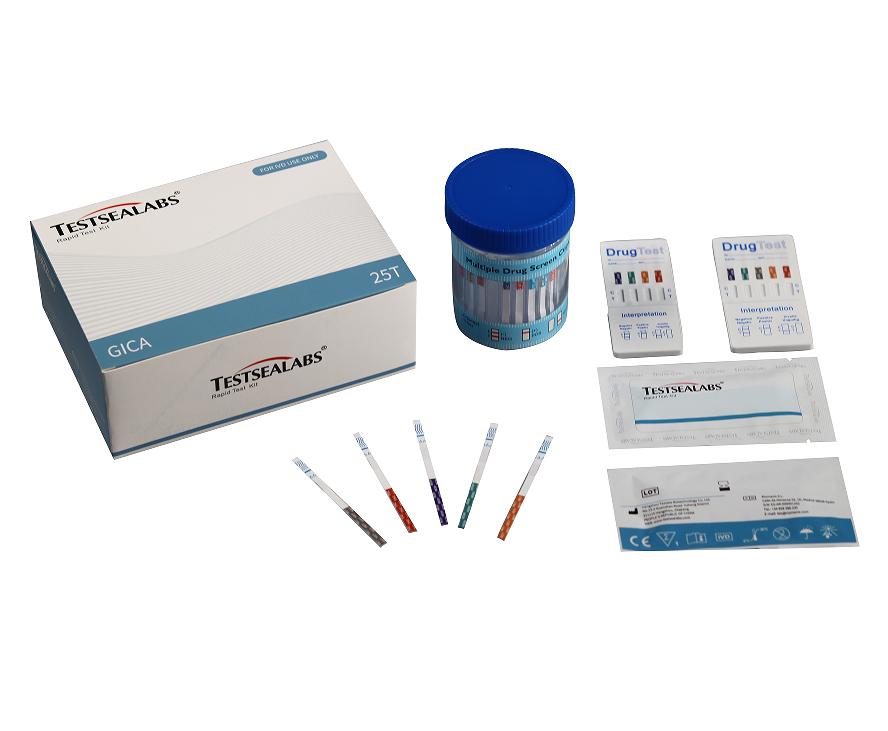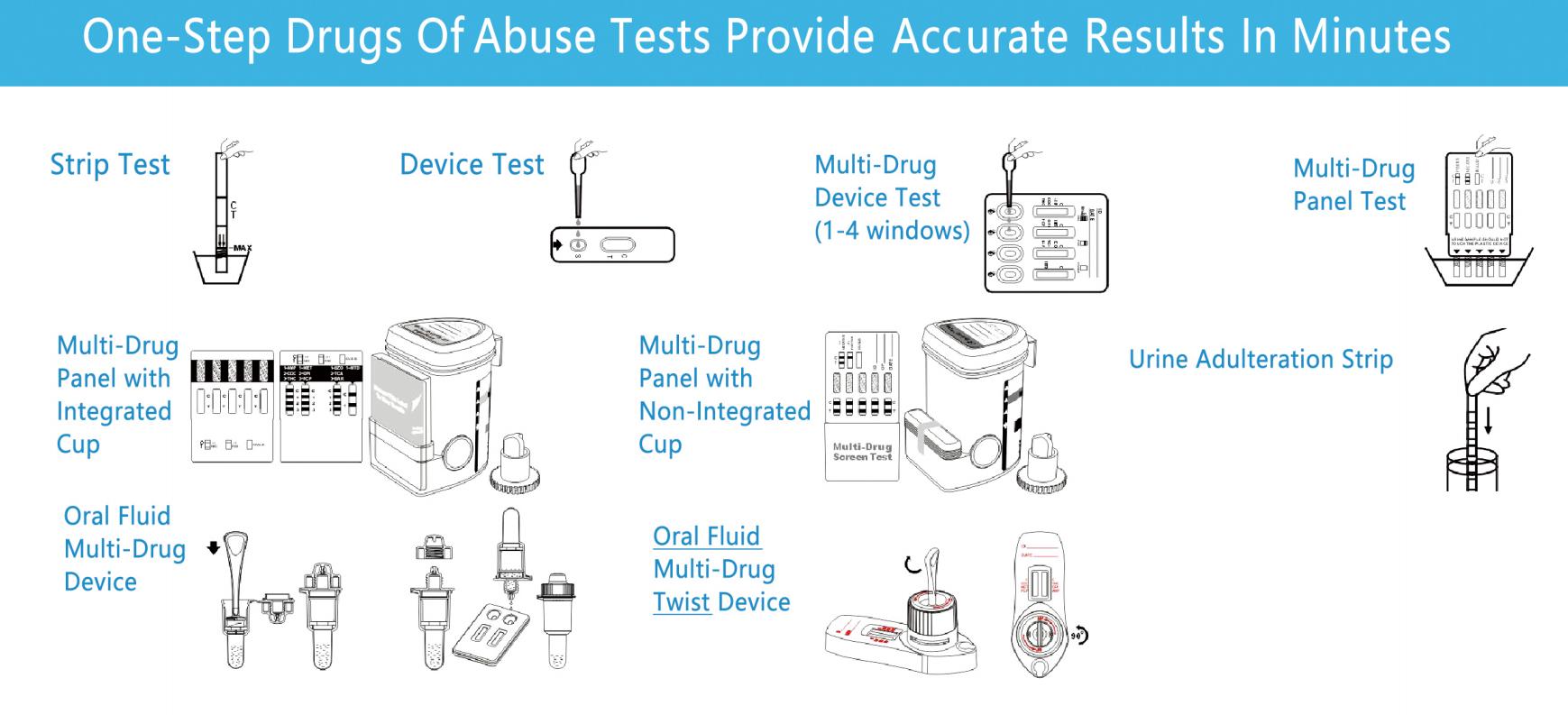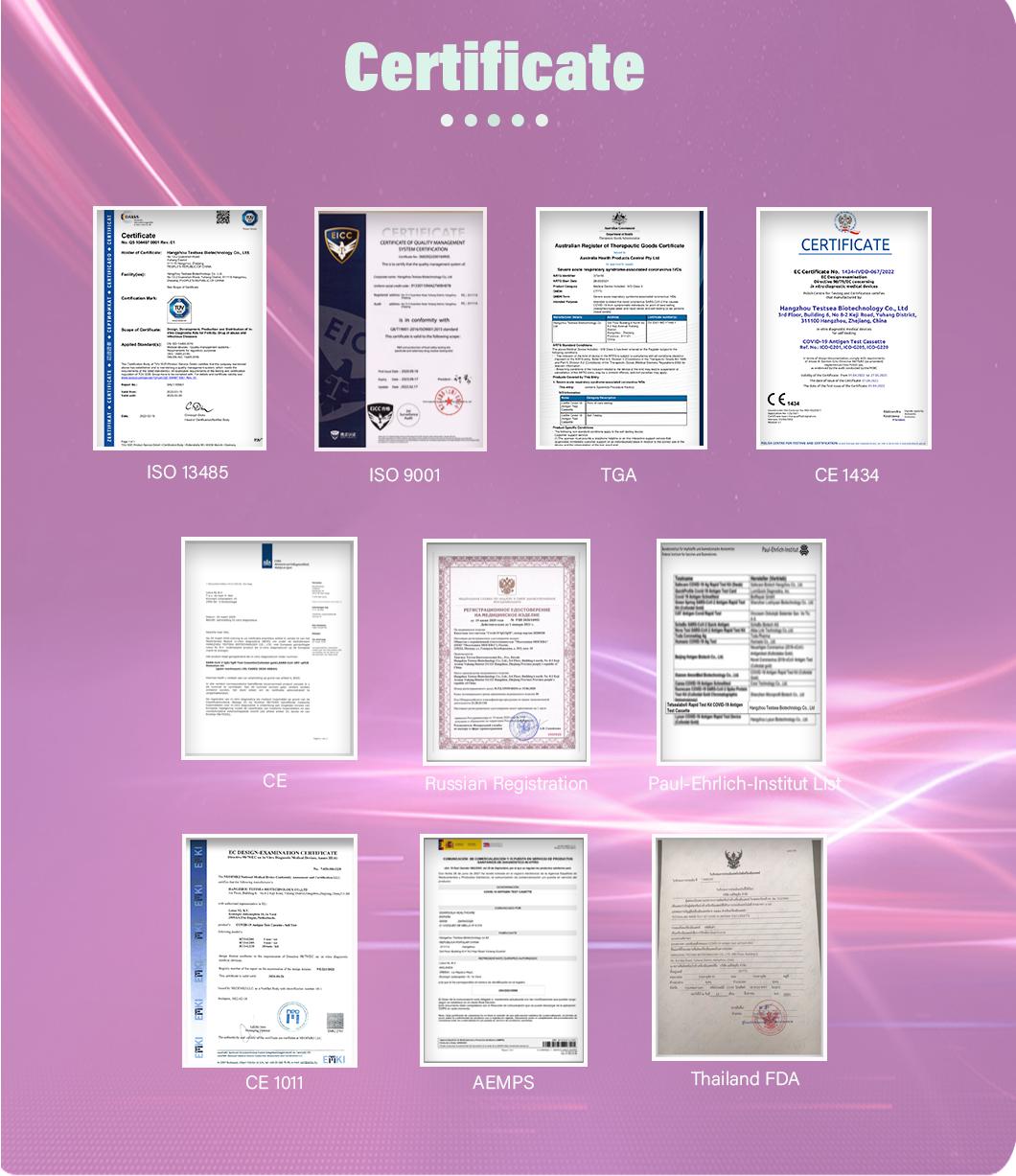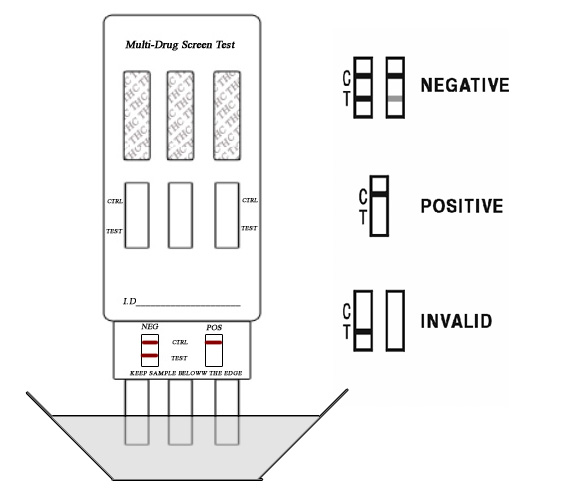Rapid Test Drug of Abuse(Narkoba) Multi-Drug 7 Drug Screen Urine Test Dip Card(AMP/MOP/THC/MET/COC/BZO/MDMA)
INTRODUCTION
Multi-Drug 7 Drug Screen Urine Test Dip Card is a lateral flow chromatographic immunoassay for the qualitative detection of multiple drugs and drug metabolites in urine at the following cut-off concentrations:
|
Test |
Calibrator |
Cut-off |
|
Amphetamine (AMP) |
-Amphetamine |
1000 ng/mL |
|
Benzodiazepines (BZO) |
Oxazepam |
300 ng/mL |
|
Marijuana (THC) |
11-nor- 9-THC-9 COOH |
50 ng/mL |
|
MET |
MET (Ecstasy) |
2000 ng/mL |
|
Methylenedioxymethamphetamine (MDMA) |
D,L Methylenedioxymethamphetamine |
500 ng/mL |
|
Morphine (MOP 300 or OPI 300) |
Morphine |
300 ng/mL |
|
COC |
Cocaine |
300 ng/mL |
Configurations of the Multi-Drug Multi line Cassette (urine) come with any combination of the above listed drug analytes. This assay provides only a preliminary analytical test result. A more specific alternate chemical method must be used in order to obtain a confirmed analytical result. Gas chromatography/mass spectrometry (GC/MS) is the preferred confirmatory method. Clinical consideration and professional judgment should be applied to any drug of abuse test result, particularly when preliminary positive results are indicated.

Materials Provided
1.Dipcard
2. Instructions for use
[Materials required, not Provided]
1. Urine collection container
2. Timer or clock
[Storage Conditions And Shelf Life]
1.Store as packaged in the sealed pouch at room temperature (2-30℃ or 36-86℉). The kit is stable within the expiration date printed on the labeling.
2.Once open the pouch, the test should be used within one hour. Prolonged exposure to hot and humid environment will cause product deterioration.
[Testing Method]
Allow the test card, urine specimen, and/or controls to equilibrate to room temperature (15-30°C) prior to testing.
1.Bring the pouch to room temperature before opening it. Remove the test card from the sealed pouch and use it as soon as possible. Remove the cap from the end of the test card. With arrows pointing toward the urine specimen, immerse the strip(s) of the test card vertically in the urine specimen for at least 10-15 seconds. Immerse the test card to at least the level of the wavy lines on the strip(s), but not above the arrow(s) on the test card. See the illustration below.
2.Place the test card on a non-absorbent flat surface, start the timer and wait for the red line(s) to appear.
3.The results should be read at 5 minutes. Do not interpret results after 10 minutes.
Negative: *Two lines appear. One red line should be in the control region (C), and another apparent red or pink line adjacent should be in the test region (T). This negative result indicates that the drug concentration is below the detectable level.
*NOTE: The shade of red in the test line region (T) will vary, but it should be considered negative whenever there is even a faint pink line.
Positive: One red line appears in the control region (C). No line appears in the test region (T). This positive result indicates that the drug concentration is above the detectable level.
Invalid: Control line fails to appear. Insufficient specimen volume or incorrect procedural techniques are the most likely reasons for control line failure. Review the procedure and repeat the test using a new test panel. If the problem persists, discontinue using the lot immediately and contact your local distributor.
[You may be interesting in the products information belows]
TESTSEALABS Rapid Single/Multi-drug Test Dipcard/Cup is a rapid, screening test for the qualitative detection of single/multiple drugs and drug metabolites in human urine at specified cut off levels.
* Specification Types Available
Results interpretation


√Complete 15-drug product line
√Cut-off levels meet SAMSHA standards when applicable
√Results in minutes
√Multi options formats--strip,l cassette , panel and cup

√ Multi-drug device format
√6 drug combo( AMP,COC, MET, OPI, PCP, THC)

√ Many Different combinations available

√ Provide immediate evidence of potential adulteration
√6 Testing parameters: creatinine, nitrite, glutaraldehyde, PH, Specific gravity and oxidants/pyridinium chlorochromate











